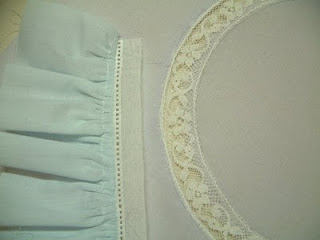 Merry Christmas, to all my quilting and sewing friends! I had a very lovely day though I didn't have any time for quilting or sewing. However, I received some very appropriate gifts.
Merry Christmas, to all my quilting and sewing friends! I had a very lovely day though I didn't have any time for quilting or sewing. However, I received some very appropriate gifts. Sister #1 surprised me with two quilt-related gifts.
The first was a Christmas stocking made out of a Double Wedding Ring cutter quilt. The woman she bought it from told her that it needn't be used only on Christmas Eve. For example, she herself had hung one, filled with long kitchen implements, in her kitchen as an object d'art. (Personally, I would never display textile art in a kitchen unless it was highly washable since it would be exposed to both moisture and grease.) I plan to hang mine in my sewing room. The second gift, which you can also see in the picture, was a framed, vintage quilt block. I believe this pattern is called Oak Leaf & Reel. I might hang this one in my living room -- just so visitors will know that a quilter lives here. (Though I suppose that the cutting table in the living room would also be a clue.)

As you know, I've become very interested in vintage patterns, so I was also delighted with the apron which Sister #2 made for me from McCall's 1713. She sent me this picture a couple of weeks ago asking if I thought our mom would like it as a Christmas gift. I replied so enthusiastically that she also made one for me and another for Sister #1. (Different colors, of course.)
Maybe I'll wear mine tomorrow when I sit down to sew. (I've yet to start my half-square triangles for RRCB.)











































